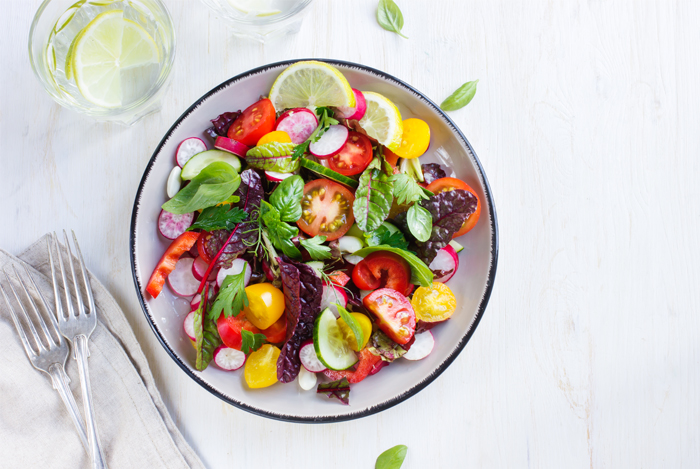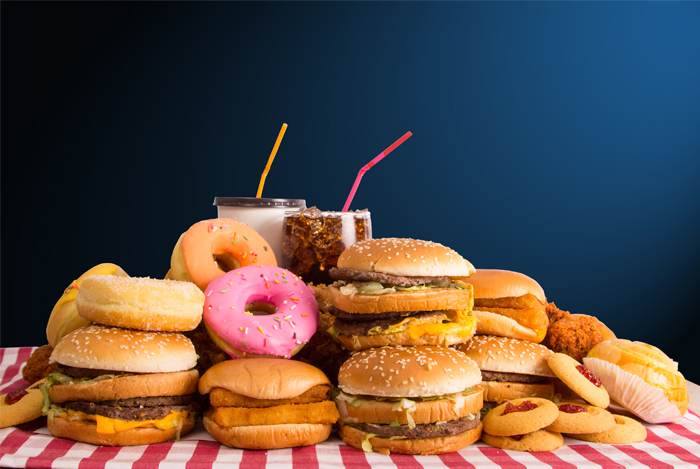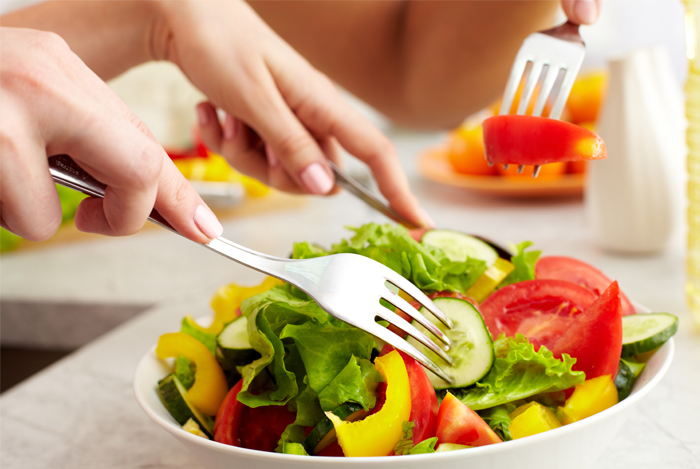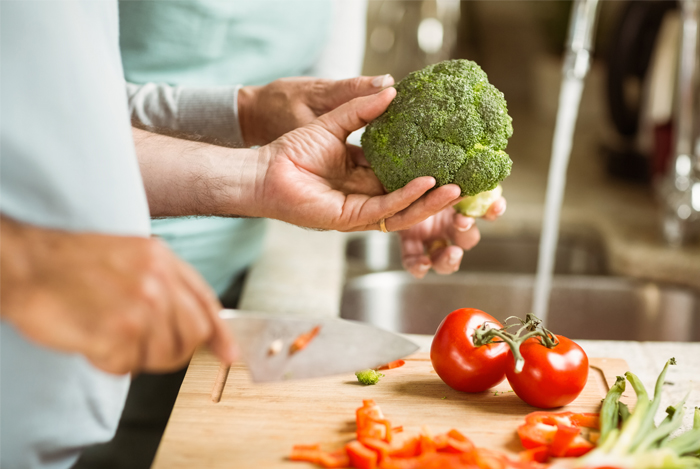Whenever you’re faced with the decision between a healthy meal and an unhealthy meal, do you find yourself choosing the unhealthy one every time?
The problem might be with the way you think about healthy foods. Sure, you might have told yourself it was time to eat more vegetables, but did you ever try to enjoy vegetables more?
This could be because you don’t realize that you can change your taste. In fact, you may even have certain convictions in place that stop you from doing so. Your tastes seem fundamental to who you are, after all.
But when it comes to becoming and staying healthy, you have to bring out the big guns. You have to make sacrifices. You can train yourself – your brain – to love healthy foods.
The Brain

In a recent study, researchers split 13 overweight individuals into two groups and measured the responses their brains gave to different foods by using functional magnetic resonance imaging (fMRI).
The so-called “intervention group” were directed to follow a high-fiber, high-protein diet to curb their appetites and cravings. They needed to reduce their overall calorie intake by 500 to 1,000 calories each day to lose weight.
After six months, the intervention group lost an average of 14 pounds. The control group lost only 5.
Researchers in the study had the participants undergo another fMRI to measure their brains’ response to healthy food photos followed by unhealthy food photos. First they’d look at something like a salad or turkey club sandwich, then they’d see images of French fries, pizza, or pasta.
The researchers watched as the striatum – the reward center of the brain – lit up with high levels of activity. The striatum is responsible for controlling cravings, and expects a rush of dopamine delivered after a sugar rush when it sees a picture of particularly unhealthy food.
The intervention group had less activity in the striatum when they looked at high-fat, high-sugar foods after their diets were over. They also had more activity when they looked at healthier foods than the control group.
The director of the U.S. Department of Agriculture’s Energy Metabolism Laboratory and author of the study, Susan Roberts, said:
“We don’t start out in life loving French fries and hating, for example, whole wheat pasta. This conditioning happens over time in response to eating – repeatedly – what is out there in the toxic food environment.”
What does this all mean, you ask?
It seems clear to me – we can forget our addictions to unhealthy foods. We can become hooked on healthy foods.
Focus on the Best Foods

If you want to move away from unhealthy foods, you’ll first need to know what else to eat. These are natural and unprocessed foods that we are genetically adapted to eating – which research shows are the best for our health.
- Meat: Humans have eaten meats like beef, pork, chicken, and lamb for thousands of years. Often, the best choice of meat is unprocessed and organically-raised, like grass-fed cattle.
- Fish: Fatty fish that are high in omegas and protein, as well as other nutrients, should be eaten every week.
- Eggs: Eggs are some of the most nutritious foods on the planet – especially the yolk. They’re super high in protein and are a great calorie addition a wide range of foods.
- Vegetables: This can’t be said enough – veggies are essential, every day. They are typically high in fiber and nutrients that are crucially important for your body.
- Fruits: Fruits are not only delicious, they’re very easy to prepare and tend to be high in fiber and vitamin C. However, fruit are high in natural sugars, so eat them in moderation.
- Nuts and Seeds: Nuts and seeds are some of the best snack foods out there. Not only are almonds, walnuts, sunflower seeds, etc. rich in nutrients, they’re also a filling, high-calorie food.
- Fats and Oils: Grapeseed oil, avocado oil, walnut oil – these oils are high in omega-3 fatty acids, as well as heart-healthy monounsaturated and polyunsaturated fats.
That’s a pretty wide variety of foods, isn’t it? It’s not that hard to eat healthy – you just have to quit the other stuff. And sometimes, you might have to simply force yourself to stop.
Go Cold Turkey

For some people, this step might seem impossible – especially if you suffer from eating disorder or food addiction.
But if you can manage, go cold turkey. That means you need to cut out unhealthy foods altogether, immediately.
Tell yourself it’ll only be for a little while if you need to. Every time you dig into a salad, tell yourself it’s only temporary. Eventually, you’ll be gorging yourself on that horrible junk food you love so much.
But after a little, you might just realize that you didn’t need all that junk food after all. And when you picture yourself eating unhealthy, you might just recoil in disgust.
Learn to Hate Junk Food

Your food preferences are learned, simple as that. The reason why you may love junk food is not because it’s what your body needs – it’s because junk food is what your brain craves.
In 2010, two consumer scientists tested their ideas on the causes of obesity. They noted a “self-perpetuating cycle” of preferences; food companies pushed foods high in sugar, fat, and salt, which made children learn to enjoy them. Then, more of these foods were created to accommodate that newly-created demand.
Despite the appearance of a wide range of choices, food manufacturers are repeatedly delivering very specific sorts of flavors – sweet and salty.
Some people say that cooking is the answer to this problem. When you only allow yourself to eat what you’ve cooked, you tend to go for healthier foods with more diverse ranges of taste.
But how can this apply to children? When children feed themselves, they tend to go for whatever’s easiest – which are usually heavily processed, microwavable dishes.
What you need to do – as an individual and a family – is to break yourselves of your fast food habits. There may be a learning curve, but it will be worth it once you’ve achieved a healthier body. Here’s how:
Remove All Temptations

This step may be the most important of all. Sure, you can trick your brain to ignore the fast food restaurants on the way home from work every day – but can you avoid eating the ice cream in the freezer?
You need to positively scour your kitchen for unhealthy foods and get rid of them – or at the very least, remove them from sight and easy-access. Throw away whatever you can, or give it away to neighbors or a food bank if unopened.
This can be somewhat difficult if you have children with sweet tooth problems of their own. When you remove their favorite snacks from the fridge and cupboard, there might be hell to pay.
If this is the case, create a separate area for junk food that you never have to go through. That way, when you reach for the tin of walnuts, you won’t be tempted to sneak a few cookies.
Most importantly of all: stop yourself from mindlessly eating these temptations.
If you know you can keep a big bag of chips in your pantry without pulling it out and eating the whole thing before you’ve even realized it, great! But if you think you may be susceptible to mindless eating, get rid of it, pronto.
Make Healthy Food Your Go-To Food

For a lot of people, unhealthy foods are part of small rituals. When you go to work each morning, you might stop and buy a sugary energy drink. After a family gathering or weekly meeting, you might dine at a restaurant notorious for its unhealthy dishes.
You have to train yourself to replace these ritualistic food choices with healthy ones. Instead of making that trip to the vending machine every day and buying a candy bar, try going for a walk instead – while eating an apple.
When you go to a restaurant, look at their healthy options. Or, if you absolutely must have a specific food, learn how to make it yourself – the healthy way.
You can incorporate strictly healthy meals and snacks in your home as well. Store healthy foods in your fridge, pantry, and out on your countertops. Everywhere you would normally have a bag of chips or a box of cookies, put a bowl of fruit or granola bars.
Whatever you do, you have to make healthy foods the foods you choose every time.
Learn More About the Foods You Eat

The Internet is jam-packed with terrifying infographics about the unhealthy and addicting foods we eat on a daily basis. So start paying attention.
If you learn about the food you’re really eating, you may think twice the next time you buy it. Find out where additives and preservatives really come from. Figure out whether or not the meat you’re buying is injected with sodium and other questionable liquid filler.
Don’t spare yourself any of the gory, gross details either. Confront every part of your meal and learn where it came from and what it’s doing to your body when you eat it.
Then, the next time someone asks if you’d like a bite of the awful meal they’re having, you can confidently say “No, thank you.”
Will you try to cut unhealthy foods out of your diet? Have you had any success training your brain to want to eat healthy foods?
Share in the comments below!
The post How to Train Your Brain to Love Healthy Foods appeared first on Nutrition Secrets.
http://www.nutritionsecrets.com/how-to-train-your-brain-to-love-healthy-foods/
No comments:
Post a Comment